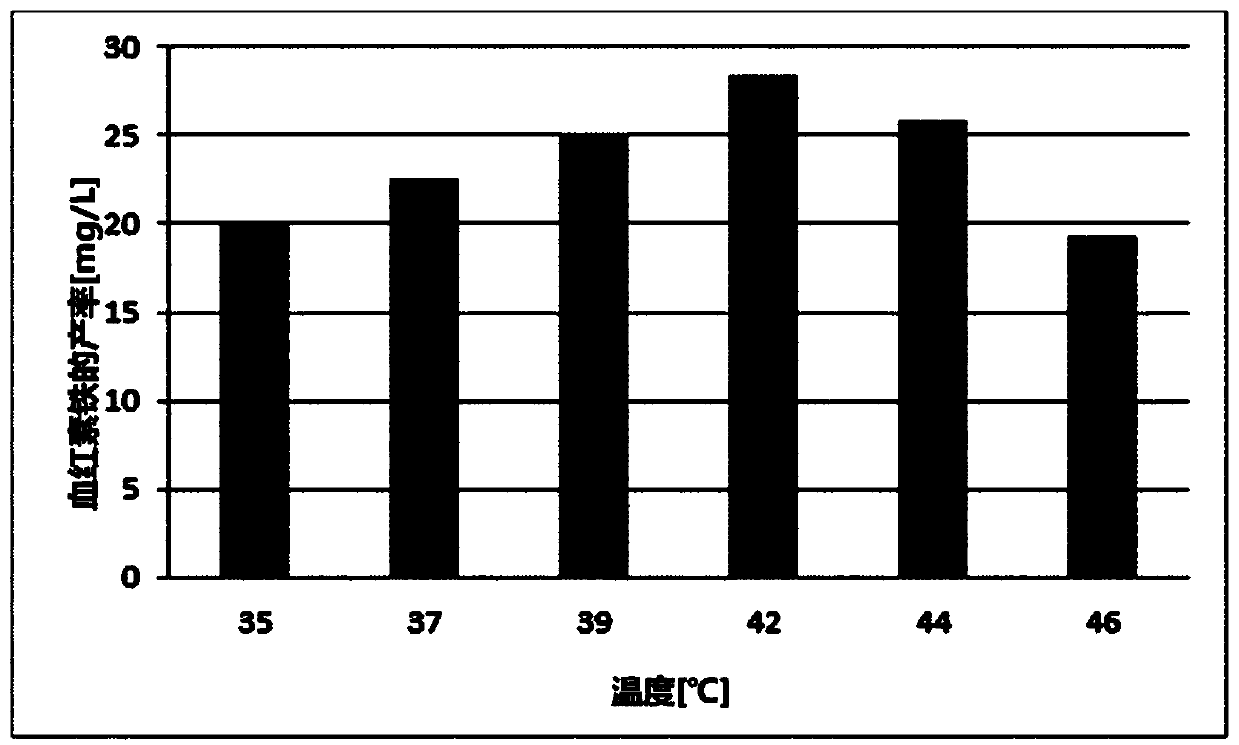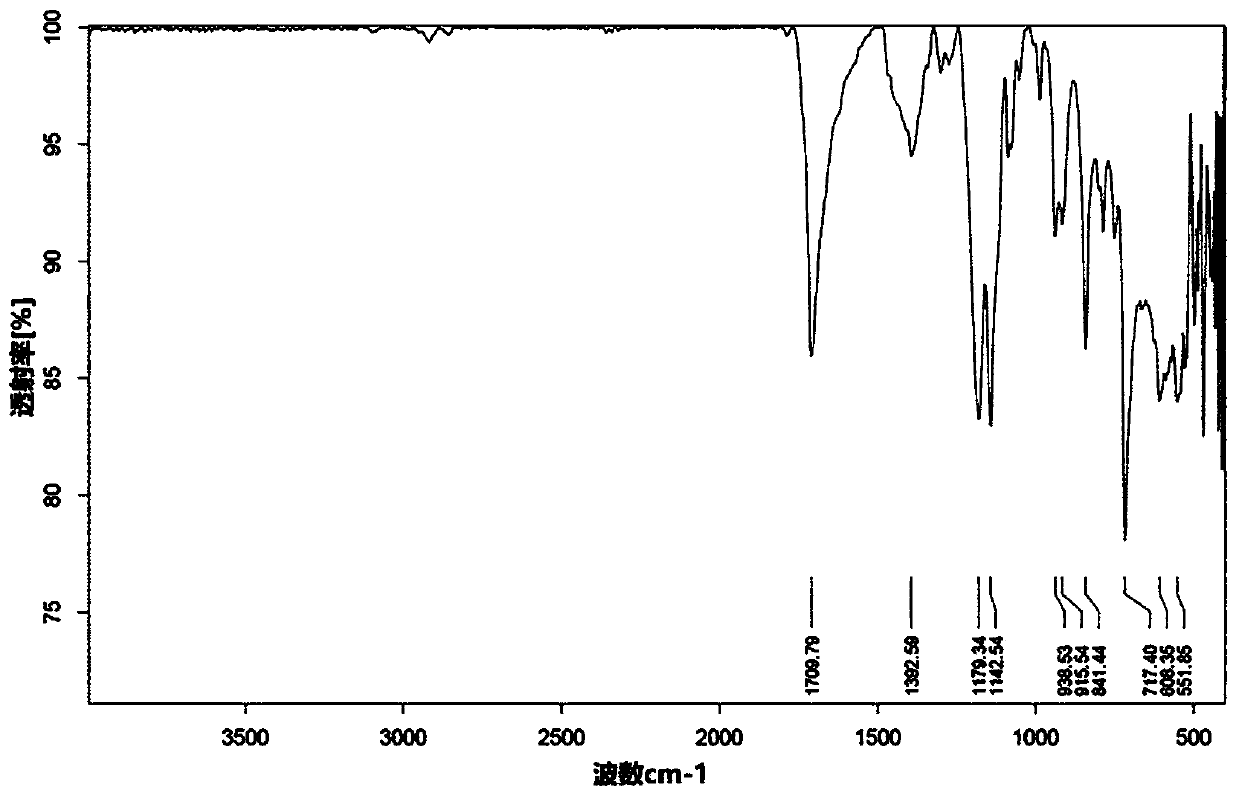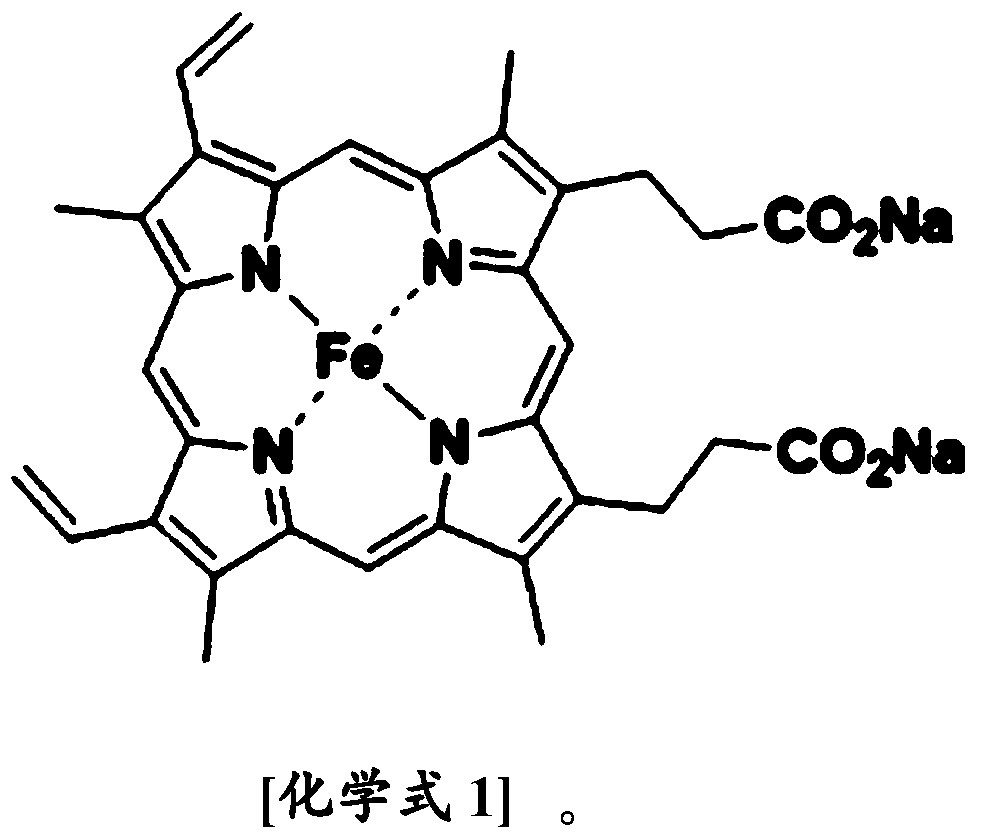Biological method for preparing heme iron not derived from porcine blood
A heme iron, biological technology, applied in iron group organic compounds without C-metal bonds, iron organic compounds, organic chemistry, etc., can solve problems such as hindering the use of iron supplements, residues, infections, etc.
- Summary
- Abstract
- Description
- Claims
- Application Information
AI Technical Summary
Problems solved by technology
Method used
Image
Examples
Embodiment 1
[0032] Embodiment 1: Preparation of heme iron producing strain
[0033] Regarding the heme biosynthetic pathway in the microorganisms of the present invention, heme iron producing strains were prepared through several trial and error steps. The heme iron-producing strain thus prepared is E. coli DH5α pLEX_HMD, which is a DH5α-based E. coli through a plasmid designed for heme biosynthesis specifically containing the self-expressing promoter P L , ALA synthase gene (HemA), NADP-dependent malic acid enzyme gene (MaeB) and dicarboxylate transporter gene (DctA), the strain thus prepared was deposited in Korea Bioscience and Korean Type Culture Collection of the Institute of Biotechnology (accession number: KCTC 13173BP).
[0034] Based on the comparison of its heme iron production ability with strains prepared using MG1655, Top10, BL21, and Rosetta gami, the production strain E. coli DH5αpLEX_HMD showed excellent heme iron production ability compared with other E. coli strains c...
Embodiment 2
[0040] Embodiment 2: Optimization of heme iron production conditions
[0041] Using the production strain Escherichia coli DH5αpLEX_HMD prepared in Example 1, the production process was optimized, including the optimization of the medium composition. figure 1 The results of optimizing the culture temperature as one of the conditions used to optimize the production process are shown. The production conditions of heme iron finally established through several methods to obtain the optimal production conditions are summarized below.
[0042] [Table 2]
[0043] Optimal conditions for heme iron production
[0044]
[0045]
Embodiment 3
[0046] Embodiment 3: Optimization of heme iron purification conditions
[0047] In this example, a heme iron purification method was developed and its specific conditions were optimized. The finally established purification conditions for heme iron are as follows.
[0048] The culture solution of the heme iron-producing strain Escherichia coli DH5αpLEX_HMD was centrifuged at 3,000 g for 15 minutes at 4° C. to recover cells thereof. The cells thus recovered were washed twice by suspending in PBS (phosphate-buffered saline) followed by centrifugation. The finally recovered cells were naturally dried for about 30 minutes and then weighed. Typically, 40 to 50 g of cells can be recovered from 5 L of culture medium. Heme iron was extracted by adding cold acid-acetone to the recovered cells. Here, the cold acid-acetone used was prepared by mixing 998 ml of acetone with 2 ml of hydrochloric acid at -20°C. Addition of cold acid-acetone was performed by adding 1 L of cold acid-ac...
PUM
 Login to View More
Login to View More Abstract
Description
Claims
Application Information
 Login to View More
Login to View More - R&D
- Intellectual Property
- Life Sciences
- Materials
- Tech Scout
- Unparalleled Data Quality
- Higher Quality Content
- 60% Fewer Hallucinations
Browse by: Latest US Patents, China's latest patents, Technical Efficacy Thesaurus, Application Domain, Technology Topic, Popular Technical Reports.
© 2025 PatSnap. All rights reserved.Legal|Privacy policy|Modern Slavery Act Transparency Statement|Sitemap|About US| Contact US: help@patsnap.com



